One important maintenance item that is often overlooked by owners is changing the fluid in your trucks differentials. The fluid in your Jeep's front and rear differentials will need to be changed at regular intervals (for my 2005 it's every 12000 miles), and should be changed after a water crossing.
So what's a differential? In your four wheel drive Jeep there are two differentials (often called a diff or pumpkin). The differential's job is to take power from your drive shaft and transmit it via the axles to your wheels. It does this using a series of gears. As the power is transmitted, heat is produced, and gear oil is used to cool the heat, and to lubricate the gears (similar to what engine oil does in your engine). It's this fluid that breaks down and needs to be changed.
Luckily, changing your diff fluid is reality easy. Let's start by identifying the parts you'll be working with. This is a standard rear axle - while yours may be different, the fluid change is roughly the same.
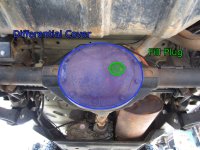
So what's a differential? In your four wheel drive Jeep there are two differentials (often called a diff or pumpkin). The differential's job is to take power from your drive shaft and transmit it via the axles to your wheels. It does this using a series of gears. As the power is transmitted, heat is produced, and gear oil is used to cool the heat, and to lubricate the gears (similar to what engine oil does in your engine). It's this fluid that breaks down and needs to be changed.
Luckily, changing your diff fluid is reality easy. Let's start by identifying the parts you'll be working with. This is a standard rear axle - while yours may be different, the fluid change is roughly the same.

- We'll begin by positioning our oil pan under the rear differential (to catch the gear lube that will come pouring out). Then unbolt the bolts holding the diff cover on.
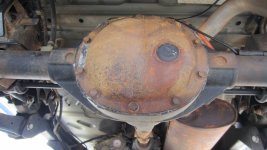
- Once the diff cover is unbolted you may need to pull on it with your hands, or even use a screwdriver to break the seal (it's most likely held on with RTV at this point), but be very careful not to gouge the metal of your cover, or the axle housing. Once the cover is off, and most of the fluid has drained into your oil pan, you'll need to clean things up a bit. I prefer to use a paper towel and soak up any extra fluid. You'll then need to clean off any remaining gasket material so that your axle housing is nice and clean.
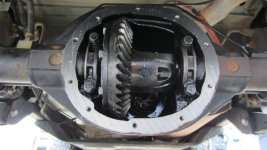
- You'll want your diff cover to be just as clean as the axle housing. Just take your time and clean everything thoroughly.
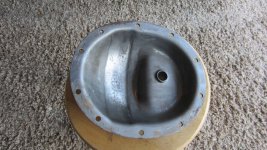
- Since my cover was pretty rusted I took the time to shoot it with some spray paint.
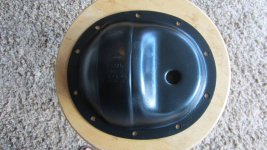
- You'll need to put down a bead of RTV now. This is most likely the hardest part of the process. put on an even amount that won't leave any gaps.
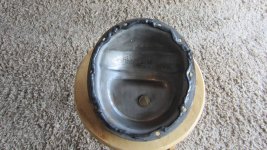
- Before the RTV dries you'll want to attach the cover to the axle housing. I find it easiest to hold the cover very lightly against the axle housing and begin to insert the bolts until they are finger tight, then do the next bolt. When you go back and torque the bolts to 30 ft. lbs. tightened in a criss-cross pattern.
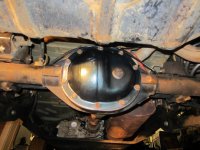
- Now refill the differential with fluid and you're good for another 12,000 miles.
Last edited:
